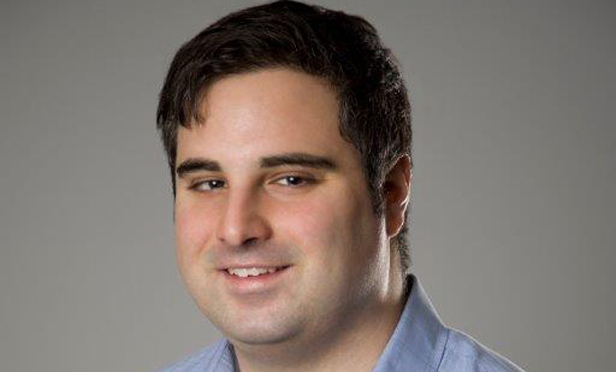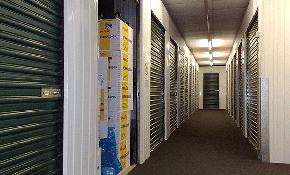 Muoio: “While we are not predicting a recession, it might be wise to begin prepping for a shift and owners may want to think about selling.”
Muoio: “While we are not predicting a recession, it might be wise to begin prepping for a shift and owners may want to think about selling.”
IRVINE, CA—Chris Muoio, senior quantitative strategist of Ten-X, recently discussed the current state of hospitality, the risks facing the hotel industry and the trends on the horizon for hospitality’s future.
Despite tailwinds from the labor market in the form of payroll and wage gains, coupled with cheaper gas prices, consumer spending on hotels and motels has flat-lined in recent months, according to Ten-X Research and Muoio. This could perhaps be a pause before a resumption in growth or reflect the headwind of Airbnb siphoning off marginal spending in this space.
Ten-X’s recent hotel monitor report observed an increase in supply and a generally flat or decrease in occupancies. In the top 25 US markets, occupancies were a seasonally unadjusted 77.3% in the second quarter, flat from a year ago. While only 11 of the 25 metros had increasing occupancies, those gains were significant, offsetting the declines found in a plurality of metros.
Second quarter cap rates remained flat from the previous quarter at 8.5%, now 30 basis points higher than a year ago. Limited-service cap rates remained stable at 8.7% and are only 10 basis points higher than a year ago, while full-service cap rates are up 50 basis points from a year ago at 8%. Overall, cap rates are 100 basis points above average, says Muoio.
While GDP continues to expand at a moderate pace, portending continued gains in hotel revenues as the two are highly correlated, cyclical risks are rising. The expansion has long exceeded its historical norm, and while there is minimal risk of an imminent recession, it becomes increasingly prudent to account for such a scenario.
“The activity in 2015 peaked and has declined since then,” says Muoio. “Both a correlation to the economic cycle and international volatility may impact activity. The economic cycle is holding firm with interest rates remaining low, holding cap rates lower as well, and resulting in higher prices and capital gains. While we are not predicting a recession, it might be wise to begin prepping for a shift and owners may want to think about selling. A lot of variables can change quickly and this seems to be a good window to sell given how long this cycle has gone on and how low interest rates are relative to history.”
While demand popped as was expected in the second quarter, surpassing growth in room supply, risks continue to mount. Supply additions continue to increase, a problem that is growing particularly acute in certain metros, says Ten-X’s quarterly hotel monitor.
It does appear that the blip higher in foreign travel spending was temporary as it has started to decline again in recent months. The recent terror attacks in Europe and fallout from Brexit continue to churn and cause headwinds on international travel.
However, while the dollar had fallen somewhat, it is on the rise once again in the aftermath of Brexit. China and Japan’s economies remain weak and in search of stimulus, as does Europe’s. This combines to paint a weaker outlook for international hospitality demand.
In addition, the sector now faces a secular technological threat from Airbnb, which is creating shadow supply in larger hotel markets and around events that were once boons to hotel operators. These supply additions continue to mount, though this is occurring in an uneven fashion across the country. Several metros such as New York City, Houston, Austin, Miami, Washington DC and Pittsburgh are reporting hearty supply additions while New York City and Washington DC also face the continued expansion of Airbnb. These metros will face harsher downturns as hotel stocks in those areas expand rapidly.
“New York City is seeing traditional hotel’s fundamentals stagnante amid rising supply, in addition to shadow supply problems caused by the rise of Airbnb,” says Muoio.
Ten-X’s 2019 forecast remains in place as a stress test for how fundamentals would react in the first year of a recession, although it emphasizes it is not at this time a temporal recession call. Simply, this economic expansion has long outlived the average and so the probability of a turn in the cycle continues to build. As such, the relative downsides of the markets are gaining increased weight in Ten-X’s ranking and forecasting process.
Ten-X’s current forecast calls for occupancies to continue grinding higher, eventually peaking at 73.8% in 2018, some 70 bps lower than its prior estimate as demand continues to cool and supply picks up. After the first year of a recession, it is expected that occupancies would fall to 69%.
Room rate growth will measure 3.7% this year, on par with Ten-X’s prior forecast, before cooling slightly in 2017-18 to 3.4% per annum. In the Ten-X 2019 cyclical model, it is expected that ADRs will decrease a very modest 0.3%, as occupancies will bear the brunt of a downturn initially.
Ten-X expects RevPAR will rise just 4.1% this year, down 50 bps from the prior forecast. This would be followed by growth measuring just below 4% in 2017-18 as room rate growth decelerates slightly. RevPAR is then projected to fall 6.8% in Ten-X’s 2019 recessionary model.
“As a summary, risks to the sector are rising but international funds are still flowing into the US because of a flight to quality phenomenon and low yields across the globe,” says Muoio. “The US hotel market has plateaued but those assets are still favorable to foreign investors.”

















 Copyright © 2024 ALM Global, LLC. All Rights Reserved.
Copyright © 2024 ALM Global, LLC. All Rights Reserved.